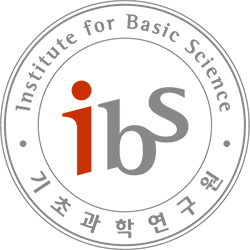Van der Waerden's theorem states that any coloring of $\mathbb{N}$ with a finite number of colors will contain arbitrarily long monochromatic arithmetic progressions. This motivates the definition of the van der Waerden number $W(r,k)$ which is the smallest $n$ such that any $r$-coloring of $\{1,2,\cdots,n\}$ guarantees the presence of a monochromatic arithmetic progression of length …
Calendar of Events
|
Sunday
|
Monday
|
Tuesday
|
Wednesday
|
Thursday
|
Friday
|
Saturday
|
|---|---|---|---|---|---|---|
|
0 events,
|
0 events,
|
1 event,
-
|
0 events,
|
1 event,
-
A common technique to characterize hereditary graph classes is to exhibit their minimal obstructions. Sometimes, the set of minimal obstructions might be infinite, or too complicated to describe. For instance, for any $k\ge 3$, the set of minimal obstructions of the class of $k$-colourable graphs is yet unknown. Nonetheless, the Roy-Gallai-Hasse-Vitaver Theorem asserts that a graph $G$ … |
0 events,
|
0 events,
|
|
0 events,
|
0 events,
|
1 event,
-
For a graph $F$, the Turán number is the maximum number of edges in an $n$-vertex simple graph not containing $F$. The celebrated Erdős-Stone-Simonovits Theorem gives that \ where $\chi(F)$ is the chromatic number of $H$. This theorem asymptotically solves the problem when $\chi(F)\geqslant 3$. In case of bipartite graphs $F$, not even the order of magnitude … |
0 events,
|
1 event,
-
A well-known conjecture of Burr and Erdős asserts that the Ramsey number $r(Q_n)$ of the hypercube $Q_n$ on $2^n$ vertices is of the order $O(2^n)$. In this paper, we show that $r(Q_n)=O(2^{2n−cn})$ for a universal constant $c>0$, improving upon the previous best-known bound $r(Q_n)=O(2^{2n})$, due to Conlon, Fox, and Sudakov. |
0 events,
|
0 events,
|
|
0 events,
|
0 events,
|
1 event,
-
We determine the maximum number of copies of $K_{s,s}$ in a $C_{2s+2}$-free $n$-vertex graph for all integers $s \ge 2$ and sufficiently large $n$. Moreover, for $s\in\{2,3\}$ and any integer $n$ we obtain the maximum number of cycles of length $2s$ in an $n$-vertex $C_{2s+2}$-free bipartite graph. This is joint work with Ervin Győri (Renyi … |
0 events,
|
1 event,
-
Order types are a combinatorial classification of finite point sets used in discrete and computational geometry. This talk will give an introduction to these objects and their analogue for the projective plane, with an emphasis on their symmetry groups. This is joint work with Emo Welzl. |
0 events,
|
0 events,
|
|
0 events,
|
0 events,
|
1 event,
-
In computer science, random expressions are commonly used to analyze algorithms, either to study their average complexity, or to generate benchmarks to test them experimentally. In general, these approaches only consider the expressions as purely syntactic trees, and completely ignore their semantics — i.e. the mathematical object represented by the expression. However, two different expressions … |
0 events,
|
0 events,
|
0 events,
|
0 events,
|
|
0 events,
|
0 events,
|
0 events,
|
0 events,
|
1 event,
-
We study the problem of maximizing a continuous DR-submodular function that is not necessarily smooth. We prove that the continuous greedy algorithm achieves an guarantee when the function is monotone and Hölder-smooth, meaning that it admits a Hölder-continuous gradient. For functions that are non-differentiable or non-smooth, we propose a variant of the mirror-prox algorithm that … |
0 events,
|
0 events,
|
|
0 events,
|
0 events,
|
0 events,
|
0 events,
|
0 events,
|
0 events,
|
0 events,
|

